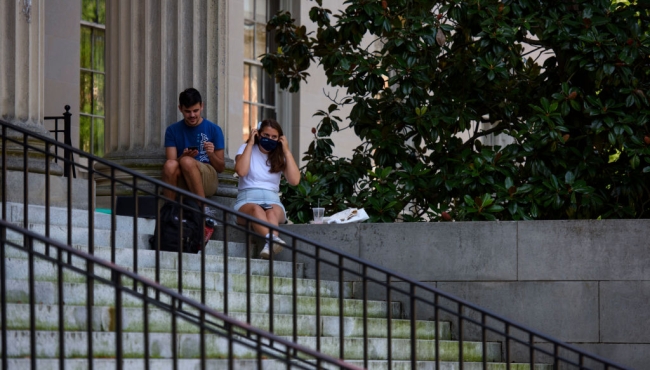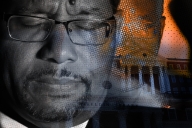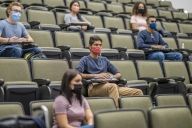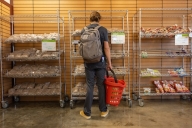You have /5 articles left.
Sign up for a free account or log in.

New research examines which factors likely influenced colleges when they decided whether to hold in-person classes this fall.
Melissa Sue Gerrits/Stringer/Getty Images
In fall reopening announcements, colleges and universities emphasized student and employee safety as important in their decision making. But a new working paper finds state and county sociopolitical features had a stronger influence on whether colleges held in-person instruction than did the severity of the pandemic.
Among several factors considered, county sociopolitical features had the strongest influence on colleges’ decisions to reopen with in-person instruction this fall, followed by pandemic severity and state sociopolitical features, according to the working paper. Public four-year colleges were most strongly influenced by state socioeconomic features, and private colleges more seriously considered pandemic severity in their decision making than public institutions.
The new working paper is part of a series by the College Crisis Initiative at Davidson College. The initiative has studied colleges’ decision making throughout the pandemic. In September, the group released data showing that the political leanings of colleges’ home states played a role in their decisions about whether to bring students back to campus in the fall.
This latest paper, titled “We Want You Back: Uncovering the Influences on In-Person Instructional Operations in Fall 2020,” builds on those findings. Authors analyzed final decisions for fall semester instruction as of Sept. 9, 2020, for 2,469 institutions. The paper has not been peer reviewed or formally published.
To create county and state sociopolitical variables, authors used a variety of unobserved variables that predicted state and county political outcomes, such as Republican governor control or percentage of the 2016 vote share for Donald Trump. Combined, these unobserved variables "essentially make up what could be determined as a set of values and policy preferences" for a county or state, said Daniel Collier, lead author of the paper, a researcher at the W. E. Upjohn Institute for Employment Research in Kalamazoo, Mich., and part-time faculty member at the University of North Georgia. They used the same method to create a pandemic severity variable, which included variables that predicted state and county 14-day average COVID-19 cases per capita at the time when institutions made their final decisions.
After grouping institutions by type, the authors found that pandemic severity impacted decision making significantly only at private four-year colleges. Private institutions should be praised for their attention to the pandemic, the authors wrote. But sociopolitical factors still influenced private colleges more than pandemic severity.
“What was surprising was how politically sensitive four-year private institutions were,” said Collier.
Even though they are being less reliant on the state than their public college neighbors, Collier expects that private institutions are still working to curry political favor and be part of the local in-group.
“We think that they don’t want to upset their localized enrollment base,” he said.
Private colleges could also be concerned about competing with other institutions in the state, said Chris Marsicano, an assistant professor at Davidson and co-author of the working paper.
State sociopolitical factors had the largest influence on four-year public universities out of all factors studied, according to the paper. In fact, it was the only factor that was statistically significant for four-year public universities.
“Four-year public institutions, when it came to making their decisions, were only impacted by state politics,” Collier said. Four-year public colleges are dependent on state funding structures, which could account for their sensitivity to state socioeconomic features.
“On the other hand, four-year private and two-year publics were influenced by both state and county sociopolitical features, but much more strongly by the more localized county sociopolitical features,” Collier said.
At first look, the data might seem to indicate that colleges choose first to make reopening decisions based on what’s politically favorable before considering student and employee safety, but Marsicano offered a less cynical view.
“The noncynical way to explain this is that colleges and universities know a lot more about their county- or state-level sociopolitical climate than they did about COVID-19 in August,” Marsicano said. “The politics are what they are, and have been for years, in most of these colleges towns, and their COVID situation was changing daily.”
The pandemic has worsened considerably since the beginning of the fall semester. Today, the United States is still adding more than 100,000 COVID-19 cases to its total each day. While daily new case counts are falling since a peak in early January, the number of deaths remains flat.
Despite higher numbers of infections, it’s likely that an analysis of college decision making for the spring semester will yield similar results, Marsicano said. A preliminary look at the data shows that 97 percent of institutions did not change their instruction models from the fall or made only marginal changes. Of the remaining 3 percent of institutions, more than half have moved from online instruction to more in-person instruction.
“Not a single institution has moved from fully in person to fully online,” Marsicano said.
The data don't provide a clear answer about whether colleges should open for in-person instruction. Even Collier and Marsicano approach that discussion in different ways.
“To me, it doesn’t seem a smart idea to reopen knowing that something that is more infectious than, say, what we had a year ago is right here, waiting for us,” Collier said.
“Higher education doesn’t exist in a vacuum. The days of higher ed being above the political fray are long gone, if they ever existed,” Marsicano said. “There are reasons for institutions to be open beyond just pandemic severity. So, it is not the world’s worst idea for institutions to take other things into account.”








